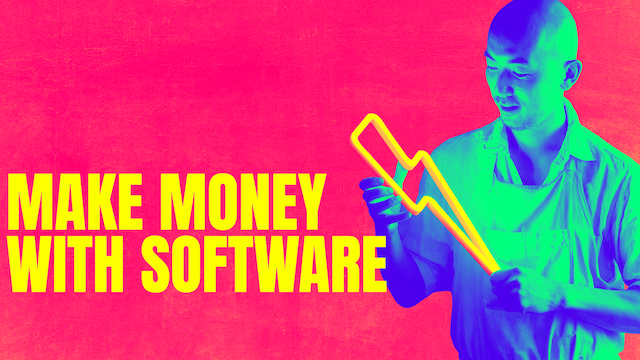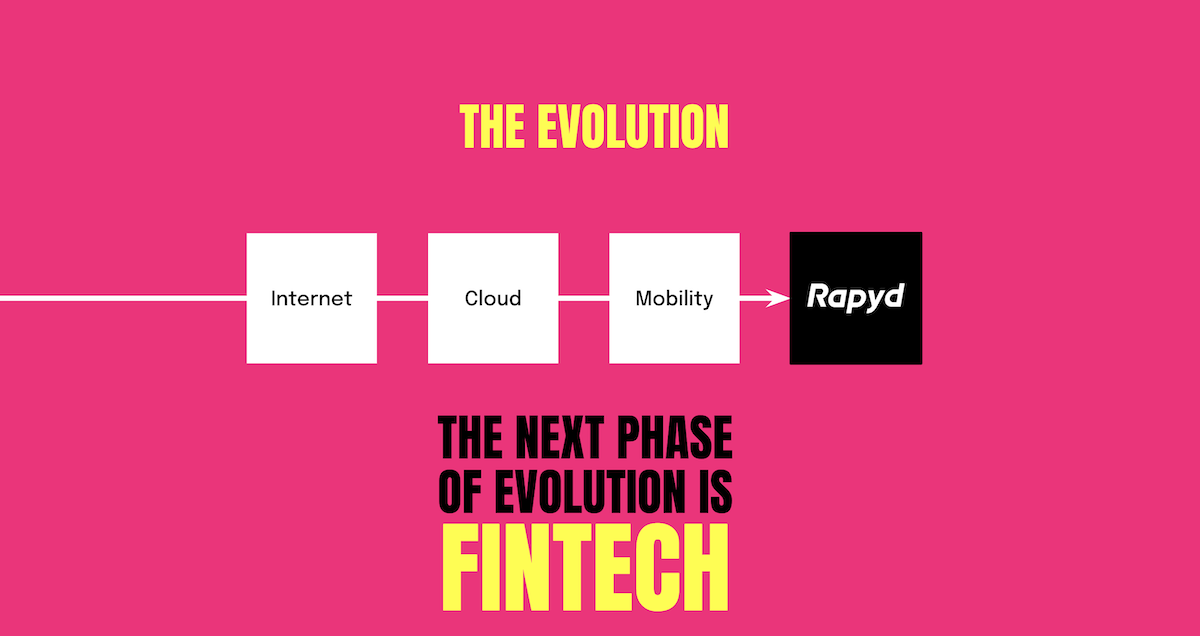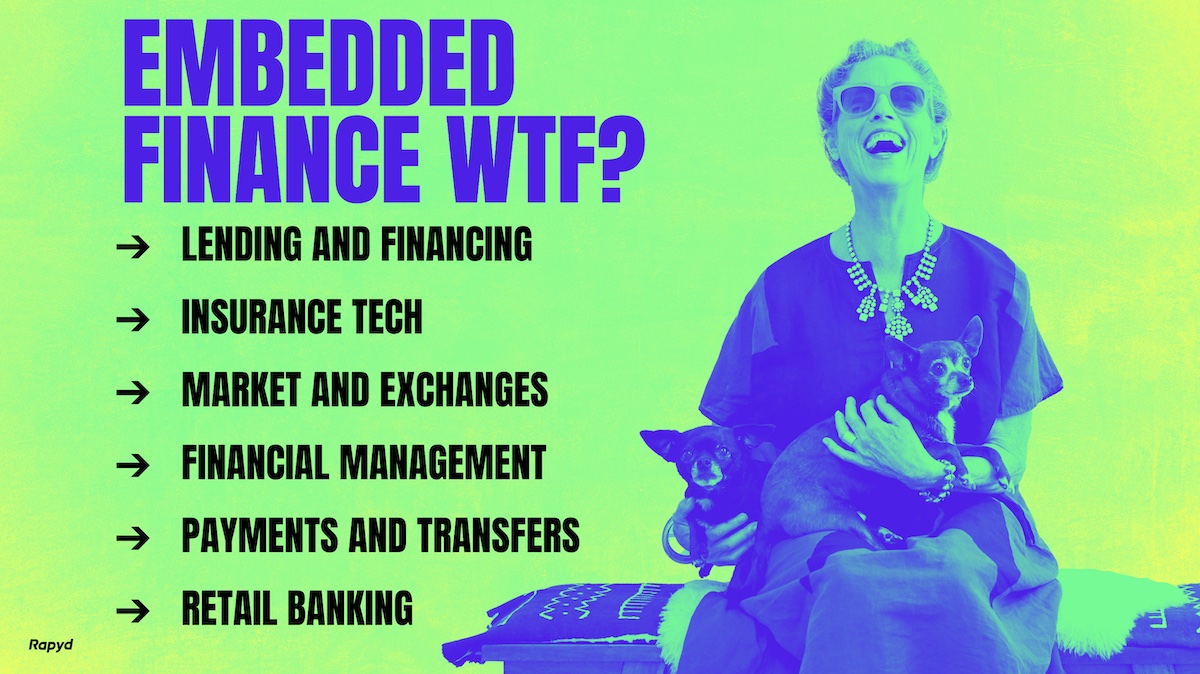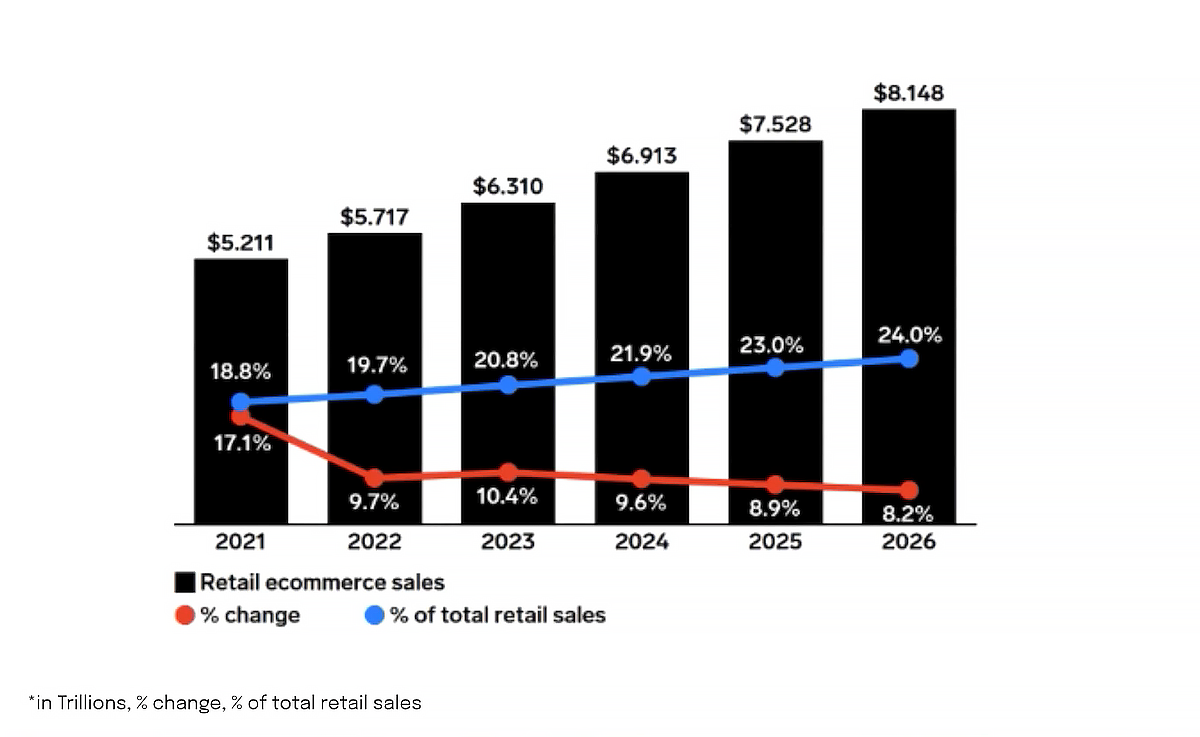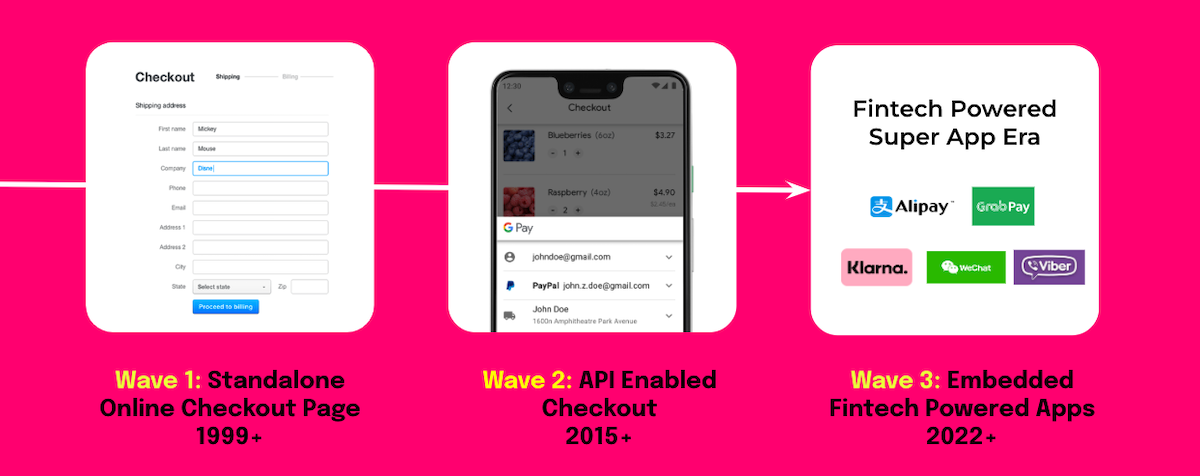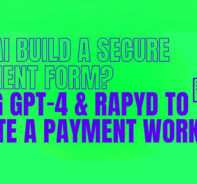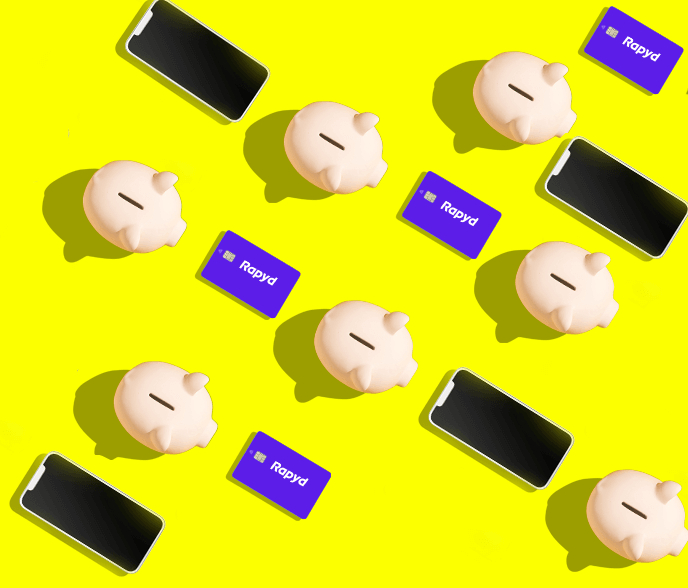How fintech APIs will eat the world and how embedded finance will power the next generation of insanely profitable applications.
There’s a famous quote from Marc Andreessen of Andreessen Horowitz and the founder of Netscape. In 2011, he said, “software is going to eat the world.” He basically predicted that everything we know was going to change in 10 years – and it came true.
Today almost everything that you do is powered by software. Calling a taxi, ordering something to eat, banking, finding a date. Everything. But Marc Andreessen got one thing wrong. He thought software companies were going to eat the world. The mistake was that it wasn’t companies, it was developers.
The thing that changed was the emergence of APIs. Platform companies want developers to build on top of them. Everything has moved to the cloud, and suddenly, developers have unlimited ways to solve just about any problem you can imagine. And almost all of these solutions involve a financial component.
Most Developers Don’t Want to Spend Time Learning Finance. Why Would You? It’s Boring.
When you’re an engineer you think “Who needs some clerk sitting behind a desk with a fax machine telling me what I can and can’t do?”
So at Rapyd, we built an API that lets developers build any type of financial application, anywhere in the world, on top of us. When we started calling our platform Fintech-as-a-Service back in 2016. no one knew what it meant. Today everyone is talking about it. Basically, fintech-as-a-service is a simple idea. It means you can do all the things you can do with traditional finance: accept payments, send funds, hold funds, issue cards, foreign exchange, create accounts, etc. But you can do it without any bank, or any clerk sitting behind a desk with a fax machine.
Our idea is simple – give developers tools to build any type of financial application and they will do the same thing with fintech that they did with software.
What is Embedded Finance Anyway?
At the beginning of the millennium, online payments were a bad experience. You would’ve been redirected to an ugly page to type in your credit card or debit card number. Maybe the payment would go through and maybe it wouldn’t. APIs offered a sleeker checkout experience. You didn’t need to be redirected. You could save your card. So there was a boom in subscription payments like Apple Pay, Google Pay and Amazon Pay. These days, you don’t even know that you pay. With Uber, for example, you order a driver, you pay without even thinking about it. It’s invisible.
This is the new era, where embedding seamless financial services into other apps is how you make money.
eCommerce Retail Sales as a Percent of Total Retail Sales
The untapped growth potential in ecommerce and embedded finance is driving a transformation in app development, with businesses trying to turn their apps into “super apps.”
It’s Up, Up and Away for Super Apps
What is a super app? Super apps are basically apps that are not, by definition, fintech or payments or finance-related, but they sell the user financial services. They are a one-stop ecosystem of services and financial applications that are offered by your business, not by your bank. And they’re powered by embedded fintech APIs.
The best examples come from Asia, such as Alipay and WeChat, which turned into robust financial applications to do payments, lending, and banking. Everything is embedded.
The implication of the super app era is that every developer needs to know fintech. Because, when you integrate fintech into your software, you create a more personal and valuable relationship between you and your client.
Why Every Developer Needs to Know Fintech
- Embedded Fintech: move beyond transactions to relationships
- More cross-sell and upsell
- Lower churn
Customer churn goes down significantly because when you start having a financial relationship with your client, it’s like your relationship with your bank. It’s not that easy to replace your bank. It’s not that easy to replace somebody that provides you with financial services, especially when those financial services enable other things that your customer does every day. Getting groceries, traveling to work, and staying connected to family and friends.
In the super app era, every developer will be a fintech developer.
Transform Payments From a Cost to Revenue
In the past, people looked at payments and said “This is an expense. You mean I have to pay somebody 2% every time someone buys something from me?” Embedded finance flips the equation. Now you are the fintech. You can start making money every time a customer transacts. You can be the one that is charging 2%, 1%, 5%, depending on your business.
If you look back over the last 10 years at every developer that was building something, they probably thought that they’d make money in one of two ways: subscriptions or advertising.
Advertising was the way people thought they could make money with any application. Build a widget, and give it away for free. Advertise. But if all the companies are advertising and none are actually selling, what’s going to happen?
In 2023, if you’re trying to make money by selling advertisements inside your app, you’re dead. Developers are shifting their revenue models to try and make money in new ways. And embedded fintech is the future.
That’s why you see all this news coming out about advertisement revenue going down, and it is true. There is no way to make serious money on advertisements unless you’re Google, Facebook, or one of these giants.
How Fintech Generates Revenue Streams
Business Has Changed and the Future of Business Is Developer Oriented
The Internet created connectivity so you can take stuff you do in a physical location and do it online. Then came cloud computing and software-as-a-service. Instead of installing software that you own, you suddenly pay a subscription to somebody. You don’t care where the software is anymore.
Then came mobility. Everything became mobile apps. Now, things that you used to only be able to do in one place are things you can do everywhere. And now comes the fourth generation where embedded payments and financial services create new revenue streams and new opportunities. Fintech-as-a-Service companies like Rapyd provide the infrastructure to leverage, embed, and build applications that you can monetize.
Two Ways to Monetize Your Apps
Most embedded finance monetization strategies fall into two basic categories.
- Strategic Partnerships let businesses embed fintech into their own applications and monetize transactions.
- Referral Partnerships let developers embed fintech into their clients’ applications and earn revenue from transactions.
So it doesn’t matter if you are building your own app or someone else’s, there’s a way to make fintech work for you.
The Recipe to Make Money with Fintech
Embedded finance significantly increases the value you can provide customers. It helps customers stay inside your ecosystem. Keeping customers, not having churn and creating recurring revenue streams. Here’s the recipe to make money with software using financial services.
- You need to find a service that provides something basic that clients come in and do at a high frequency, that they come back again and again and again to use as the starting point of your recipe.
- Acquire users and collect data. Analyze the data to see what financial services your customers need and how you can deliver them better, faster, easier, or cheaper than the clerk behind his desk with a fax machine.
- Add financial services, wallet, credit, payments, bank transfer, whatever you want.
- Engage the users to create this repetitive model and you can upsell and cross-sell new services.
Case Study: How Shopify Turned Embedded Finance Into a Revenue-Generating Machine
Elon Musk says he wants to turn Twitter into the first super app for the West. I have bad news for Mr. Musk. It’s already been built. And it’s called Shopify.
Shopify is truly an unbelievable example. People know that if they want to build an ecommerce store, they go to Shopify. But Shopify is not an ecommerce company. Shopify is a fintech company.
66% of Shopify’s revenue comes from embedded finance. They build a huge ecosystem around a basic offering of a website builder. They now have this offering of payments, business accounts, corporate cards and lending. If you look at Shopify today, their success has nothing to do with collecting $15 or $20 a month for a website. The payments and the fintech built into the Shopify offering is driving the majority of the revenue – and it’s continuing to grow up and up.
Shopify is redefining what a super app can be. It doesn’t have to be mobile. It doesn’t have to be a delivery service. It doesn’t have to be for consumers. It just needs to provide sticky financial services that are embedded seamlessly with other complimentary offerings.
As soon as you’re a Shopify client, and you’re using business accounts, payments and corporate cards, there is no way on planet Earth you will move to WooCommerce, or Wix or whatever. You’re going to stay inside this ecosystem. You might use some other companies for specific things, but Shopify is how you go to market.
More Embedded Finance Examples
Shopify is a great example, but it isn’t the only example. There are lots of companies that use embedded finance to generate revenue and reduce customer churn.
There are messaging applications. For example, Facebook and WhatsApp are doing WhatsApp Pay, and you have Alipay and you have WeChat, and Viber is now doing Viber Payments.
You have social media, gaming companies and logistics and transportation. For example, Uber, Grab, Gojek, and DiDi. It’s harder to list a mobility app that isn’t a fintech. They’re making money from embedded finance by offering an endless number of financial services to their drivers and their consumers. Imagine telling Microsoft in the 2000s that you could be making money off customers and workers. Bill Gates’ head would have exploded.
Even ecommerce companies are making money by offering either corporate cards, virtual cards or loyalty cards. They offer their seller protection, buyer protection, lending, business bank accounts and an endless number of offerings, and it’s not even their core businesses.
Once you are handling money for a user, you can build a castle of services within your platform. – Sidu Ponnappa, Gojek
Find Your Inner Fintech
Rapyd is a developer-driven company. I encourage you to start building. Because at the end of the day, that’s the reason why you’re reading this – to build better tools that help you and your customers live your dreams.
The first step is to reach out to our Partnership Team and learn more about our Partnership Program.
If you are a developer, we have a community that you need to join, community.rapyd.net.
Unleash Fintech Innovation
Get a full stack of fintech capabilities from a single platform and build the future of global commerce. No one has more ways to make fintech work for you.
- RESTful APIs, robust documentation, developer community and support
- Cloud infrastructure and microservices architecture
- Payments, Payouts, Card Issuing, Wallet
